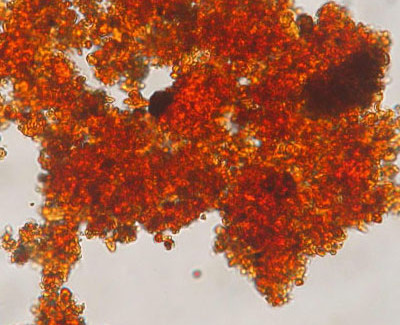
Iron Bacteria
Routine chemical disinfectants that effectively wipe out other bacteria are only modestly successful against iron bacteria. Iron bacteria build up in thick layers forming a slime that keeps disinfectants from penetrating beyond the surface cells. In addition, minor iron dissolved in water can absorb much of the disinfectants before they reach the bacterial cells. Also, because chemical reactions are slowed at the cool temperatures common in wells, bacterial cells need a long exposure to the chemical for treatment to be effective. Even if chlorine kills all the bacterial cells in the water, those in the groundwater can be drawn in by pumping or drift back into the well. Due to the above factors the following steps are recommended:
-
Prepare a chlorine solution
Use approximately 8 quarts of 5.25% (or 5qts. of 10%)chlorine bleach and mix with 100gal. of water.
It is best to prepare an amount more than the amount of water standing in the well, and the 100 gal.
measure is a safe estimate if this is not known. Most garbage cans hold 30gals. Or more so that
filling three cans with the solution is sufficient.
-
Pour or pump the solution into the well in one continuous flow. Attach a hose to a
faucet, making certain the hose itself is clean, place the other end of the hose into the well.
Open the faucet and recirculate for one hour the now-chlorinated water, washing down the inside of
the casing and the pump piping. Faucets in your house should also be opened until you detect a
chlorine smell, then close them.
-
Allow the chlorine solution to remain in the well and piping for at least 24 hours,
preferably longer. The system should then be purged free of chlorine. Since it can disrupt a septic
system, the chlorinated water should be run outdoors, perhaps into a ditch. It may also kill grass
and shrubs.
-
This process may need to be repeated process more than once. Since bacteria
tend to build up again in a few months after treatment, well owners should try to control
rather than completely "cure" the problem.


